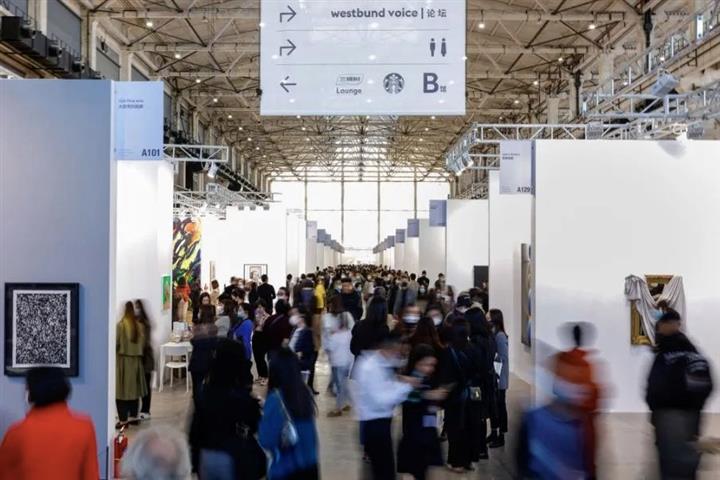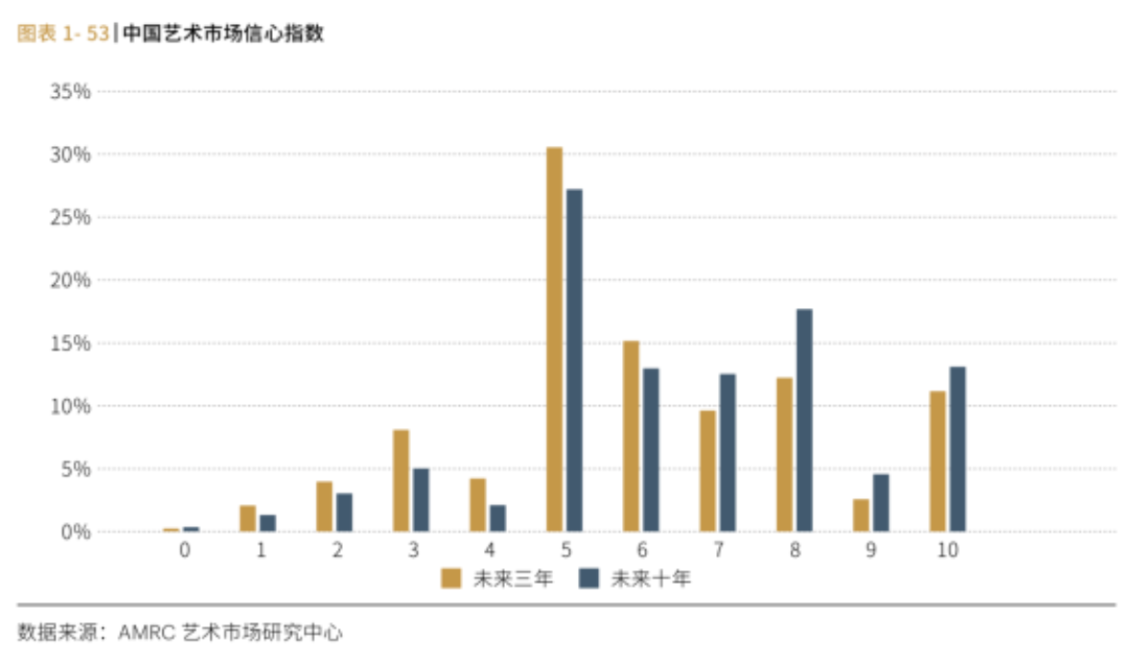 New Opportunities Arise for China’s Art Market as Young Collectors Flood In
New Opportunities Arise for China’s Art Market as Young Collectors Flood In(Yicai Global) Nov. 24 -- China’s art market seems to have recovered rapidly, with a number of major art fairs and exhibitions held this month in the country, where the Covid-19 situation has eased.
Galleries at Shanghai’s West Bund Art and Design, for example, sold CNY60 million (USD9.1 million) of artworks in just three hours after its opening. The contagion has highlighted the advantages of artworks in asset allocation and wealth management, creating new opportunities for China’s art market, experts said.
The confidence index of high-net-worth individuals and people working in wealth management for the Chinese art market is generally positive, the China Art Wealth White Paper 2020 said, noting that 67 percent of respondents gave the market higher than the median 5 points for the next three years and 6.46 on average for the next decade.
 The report was jointly released by CICC Wealth Management, the School of Arts Administration and Education under the Central Academy of Fine Arts as well as the Art Market Research Center and the Art Investment Trends, at West Bund Art and Design.
The report was jointly released by CICC Wealth Management, the School of Arts Administration and Education under the Central Academy of Fine Arts as well as the Art Market Research Center and the Art Investment Trends, at West Bund Art and Design.
Art Basel and UBS Group’s 2020 mid-year survey, The Impact of COVID-19 on the Gallery Sector, also showed that 59 percent of high-net-worth individuals think the coronavirus has increased their interest in collecting artworks.
Zhao Li, the professor at CAFA, told Yicai Global that there was a negative correlation between the art market and other markets, as evidenced by two popular fairs in Shanghai this month. He believes the outbreak will push the market in a relatively rational direction, and safer or more convenient directions must be identified amid strong uncertainty in the market.
“Artworks are fixed assets but movable, and the economic instability has highlighted their feature of maintaining value, so more funds will flow into the art market,” according to David Tung, director of Lisson Gallery Shanghai.
Many art collectors urgently need to sell their collections due to the economic crisis or for other reasons, so some artworks will be available at relatively low prices, said Zhang Xiaoming, founder of W. Ming International.
Young Blood
The online art trade boom caused by the pandemic has attracted more new and young collectors, which has promoted the transition and development of the art market, experts and people working in the field point out.
Online trade has changed the traditional sales model. According to Hiscox’s Online Art Trade Report, online volumes are expected to grow to USD9.14 billion next year. A total of 71 percent of collectors in the United States buy art over the internet, while in China, where digital trading is highly developed, online art transactions are also rising exponentially.
“Online art transactions driven by the pandemic have led to transparency of information,” said Zhao said, voicing optimism over the art plus internet approach. “It is a result of market forces.”
London Calling
The White Cube gallery in London introduced online exhibitions as a result of the coronavirus pandemic, which were welcomed by the general public.
“The online art trading model has developed with the trend of society itself,” White Cube director Wendy Xu said. “It has given artworks another circulation channel and consumers one more choice but will not change the nature of art trading.”
It seems that people can buy artworks by clicking on a webpage, which is indeed still the result of communications with the gallery, Tung added.
“During the pandemic, we auctioned some wonderful small watercolors by Chinese artist Liu Xiaodong from March to May,” Tung said. “Considering Liu’s popularity and the quality of his paintings, the auction could have been an online phenomenon like the Double 11 seconds killing."
“But as his agent gallery, we needed to consider the layout of his work and what kind of collectors would be more helpful to his academic development, so we took great care to get to know each client who inquired, including his/her collecting field and credentials, before the client could actually place an order. This is similar to the offline process.”
The current context, channels, and means of major art institutions and art transactions have not changed. Zhang agreed that the online model has helped the art market. Impulsive consumption can be generated by offline auctions and art fairs but is rare in the online model, which also confirms that the art trading market is more rational under the pandemic, she said.
New Vitality
The rise of the online model is also driving a rapid decline in the age of art buyers, with 70 percent of millennials saying the pandemic has increased their interest in collecting. Online sales took up 37 percent of total sales in the first half of this year, and millennials made up the highest percentage of big spenders, with 17 percent spending more than USD1 million in the first half, according to a report titled The Impact of Covid-19 on the Gallery Sector.
Millennials are more rational in their purchases, Xu noted. They are “born to be the online generation,” she said.
“They have more information channels and higher information collection capabilities than those of other age groups, thanks to the rise of internet,” Xu said. “Most of them do preliminary reading and research before collecting and buying, but they also learn quickly, so that they can make rational decisions.”
Zhang noted a sense of mission among millennial collectors. “They focus on new artists that relate to them, and works that relates to their own upbringing such as cartoons, as well as art funding and cultural heritage.”
Their collecting habits epitomize the development of consumer culture, and the focus on new artists and diversifying interests will have a positive impact on the art sector as a whole. The market will have more benign development when it is decentralized and no longer dominated by a few artists. But there are still many factors to consider as to whether the millennials’ preferred works will have a place in the auction market.
“This year’s popular collections may still be cartoons, abstracts, and master artists’ works, and their boutique prices may still see new highs in the market, Zhang said. “Contemporary ink painting is a field that deserves attention in China.”
Editor: Peter Thomas